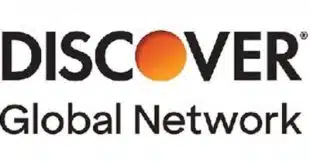MasterCard is getting close to announcing an EMV-related liability shift for online and other card-not-present transactions, a network executive said on Monday. “MasterCard will have a card-not-present liability shift,” said Melanie Gluck, vice president of emerging payments at the country’s second-largest payments network. “We haven’t announced it yet, it’s under development.”
Gluck’s remarks came during a presentation on the Europay-Mastercard-Visa chip card standard at the Money2020 trade show on Monday in Las Vegas. Speaking to Digital Transactions News, Gluck said she couldn’t reveal any details about the shift but said a formal announcement of the policy is probably “a few months” away.
The shift, in which merchants that haven’t adopted acceptance technology that supports chip cards assume from issuers the liability for counterfeit-related fraud, follows MasterCard policies that call for a liability shift for physical merchants in October 2015 (October 2017 for fuel marketers) and for ATM operators in October 2016. The policies are intended to encourage merchants to install new terminals that can support EMV transactions, which are generally regarded as less susceptible to fraud than the older mag-stripe technology.
The importance of securing card-not-present sales channels rises as physical merchants adopt EMV, a move that drives criminals to practice their counterfeit card craft online instead. While Gluck’s remarks are the first indication of a liability shift for online merchants, it remains unclear how these sellers might prepare for EMV. Gluck during her remarks indicated possible technologies consumers might use for online EMV transactions include a chip-equipped displaycard or a special fob that can read chip cards. In either case, consumers could generate a unique code they could enter to secure an online transaction, she said. But she stopped short of saying whether either of these technologies is under consideration for the upcoming card-not-present policy.
In laying out MasterCard’s position on EMV, Gluck several times stressed that the network fully supports so-called chip-and-PIN over chip-and-signature authentication. “We are pretty firm believers in adoption of chip-and-PIN,” she said during her speech. “We are not mandating it, we are encouraging it. If it’s chip-and-PIN vs. chip-and-signature, chip-and-PIN wins.”
While chip-and-PIN is the favored form of EMV in Europe and other parts of the world where EMV has been introduced, a number of U.S. banks have issued EMV cards for customers who travel abroad that require a signature rather than a PIN. MasterCard rival Visa Inc. has also been less firm about supporting chip-and-PIN, which has won the support of most U.S. big-box merchants. These merchants fear that fraud losses will be higher with signature authentication.
Gluck also indicated the costs of EMV for issuers have declined in recent years, partly thanks to economies of scale derived from production for markets that have preceded the U.S. in adopting the technology. For example, the cost of a standard EMV card is now in the $1 to $1.20 range, while that for a so-called dual-interface, contact/contactless card is $2, compared to $8 for the early chip cards, Gluck said. The cost of the displaycard, which features a small screen that can display the unique values generated by its chip, falls into the $5 to $8 range, while a card-reading fob runs $3 to $4, Gluck added.





